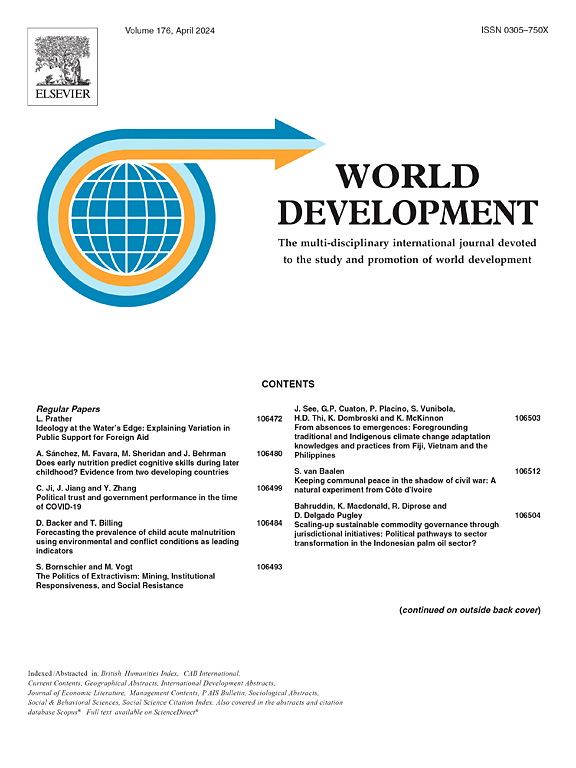印度的绝育和妇女健康
IF 5.4
1区 经济学
Q1 DEVELOPMENT STUDIES
引用次数: 0
摘要
在包括印度在内的许多发展中国家,女性绝育是计划生育项目的核心,印度25岁以上的女性中有37%做过绝育手术。长期以来,对在恶劣卫生条件下进行的手术强调广告和财政激励一直引起争议。我们通过分析提供80万印度妇女信息的几项大规模调查,促进了关于绝育对健康影响的长达十年的辩论。为了解决灭菌中的自我选择问题,我们控制了位置固定效应并依赖于工具变量策略。我们利用印度家庭对儿童死亡风险的不同信念和重男轻女这一事实。当女性头胎是男孩时,绝育率会增加,但当她们生活在历史上疟疾流行的地区时,绝育率会降低,因为她们害怕失去男孩;这种情况提供了一种工具。我们表明,绝育会恶化妇科健康,对营养指标没有影响。受教育程度较低、来自排期种姓或获得低质量医疗保健的妇女受到的影响更大。我们还讨论了通道,并解释了主要由手术本身驱动的效果。本文章由计算机程序翻译,如有差异,请以英文原文为准。
Sterilizations and women health in India
Female sterilization is at the core of family planning programs in many developing countries, including India, where 37% of women older than 25 are sterilized. Emphasized advertisement and financial incentives for operations done in poor sanitary conditions have long raised controversies. We contribute to the decade long debate on the health effects of sterilization by analyzing several large scale surveys providing information on 800,000 Indian women. To address self-selection into sterilization, we control for location fixed effects and rely on an instrumental variable strategy. We exploit the fact that Indian households have different beliefs regarding child mortality risk and have a son preference. Sterilization increases when women have a boy first-born, but less so when they live in a historically malarious area, as they fear losing the boy; this situation provides an instrument. We show that sterilization deteriorates gynecological health and has no effect on nutrition indicators. Women with lower education, from scheduled castes, or having access to low-quality health care are more impacted. We also discuss the channels and interpret the effect as mostly driven by the surgery itself.
求助全文
通过发布文献求助,成功后即可免费获取论文全文。
去求助
来源期刊

World Development
Multiple-
CiteScore
12.70
自引率
5.80%
发文量
320
期刊介绍:
World Development is a multi-disciplinary monthly journal of development studies. It seeks to explore ways of improving standards of living, and the human condition generally, by examining potential solutions to problems such as: poverty, unemployment, malnutrition, disease, lack of shelter, environmental degradation, inadequate scientific and technological resources, trade and payments imbalances, international debt, gender and ethnic discrimination, militarism and civil conflict, and lack of popular participation in economic and political life. Contributions offer constructive ideas and analysis, and highlight the lessons to be learned from the experiences of different nations, societies, and economies.
 求助内容:
求助内容: 应助结果提醒方式:
应助结果提醒方式:


